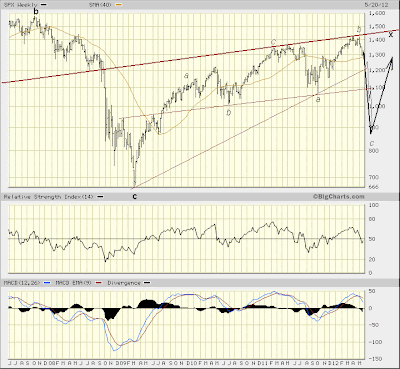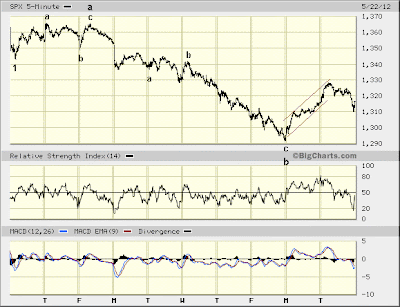A 10-year U.S. Treasury Note yielding a paltry 1.59% has a name: it's panic. Little wonder given rapidly diminishing prospects for the euro-zombie's survival. Likewise, too, then, do a myriad of financial claims on enterprises lacking the power of taxation also have a name: it's garbage. Of course, such nomenclature will not fly in the land of make believe.
The massive pile of debt heading for the dump in all probability will start reeking the moment even the safest securities on the planet (U.S. Treasuries) are indiscriminately sold on account of ongoing financial crisis reaching a point where bailout support from lenders of last resort has become ineffective, much as is inevitable. Obviously, we are close to this point right now. "Forward looking" equities evidently have caught a whiff of the stench about to overwhelm the trans-Atlantic banking system. Yet that fantasy generally still dominates mainstream thinking is truth revealed with evidence in belief that, "this time is different." Witness NASDAQ's darlings...

Here we find shades of Y2k in an index (NASDAQ 100) yet to fall below its 2011 peak, while the "old economy" has yet to even exceed that former peak! (See "Ominous Divergence") In other words, there is a long, looooooong way lower yet to go. A 38.2%-ish fall from the year's highs finds present circumstance appropriately complacent, and that's not just me talking, but the sentiment spoken by the picture above.
If there's anything "different" this time, it is the degree to which a sense of sheer panic lurks just beneath the surface. Yet so long as U.S. Treasuries — the biggest mountain of mispriced risk yet made on Wall Street over the past thirty years — maintain their shine, fantasies old and new might continue, and this even were equities still doomed to fall of their own weight from this moment forward, much as is occurring right now. Were this disposition more or less maintained throughout the market's presently unfolding setback, and were this current leg lower far from over (which by all indications appears to be the case, no matter how "oversold" some technical measures appear in absolute terms), then prospects for a panic sinking major indexes back to levels last seen in the 1987-1994 will move squarely onto the radar. We can cross that bridge once we get to it. For now a March-May 2000-like giveback appears underway. With panic lurking, much as the 10-year U.S. Treasury Note indicates, the speed at which 40% is clipped from major U.S. stock indexes could be more pronounced this time around.

* * * * *
© The Risk Averse Alert — Advocating a patient, disciplined approach to stock market investing. Overriding objective is limiting financial risk. Minimizing investment capital loss is a priority.
Analysis centers on the stock market's path of least resistance. Long-term, this drives a simple strategy for safely investing a 401(k) for maximum profit. Intermediate-term, investing with stock index tracking-ETFs (both their long and short varieties) is advanced. Short-term, stock index options occasionally offer extraordinary profit opportunities when the stock market is moving along its projected path.
Nothing is set in stone. Nor is the stock market's path of least resistance always known. More often than not, there are no stock index option positions recommended.
 There's an easy way to boost your investment discipline...
There's an easy way to boost your investment discipline...Get Real-Time Trade Notification!








































